In the vast, sun-drenched landscapes of rural America and beyond, where the hum of machinery blends with the rustling of crops, farm life unfolds in a rhythm all its own. Amid the daily grind of planting, harvesting, and maintaining heavy equipment, farmers have long sought practical solutions to everyday challenges. One such solution, both ingenious and unconventional, is the Tractor Toilet — a fixture that may raise eyebrows but has carved out a surprisingly essential role on farms across the world.
The concept might seem absurd at first glance: a toilet mounted on or near a tractor? Yet for those who spend long hours navigating fields, often miles away from the nearest restroom, the Tractor Toilet isn’t just a quirky invention — it’s a necessity born out of necessity itself. It represents more than utility; it symbolizes the adaptability, resilience, and humor that define agricultural life.
This article delves deep into the origins, functions, cultural significance, and even the controversies surrounding the Tractor Toilet. We’ll explore how this unusual contraption came to be, why it remains relevant in modern farming, and what it tells us about the evolving relationship between human needs and mechanical innovation. Whether you’re a seasoned farmer, an agricultural enthusiast, or simply curious about the quirks of rural life, the story of the Tractor Toilet offers a unique lens through which to view the ingenuity of those who work the land.

Part I: Origins and Evolution – From Field Joke to Farm Fixture
Humble Beginnings: A Farmer’s Dilemma
The Tractor Toilet didn’t emerge from a lab or a design studio. Instead, like many farm innovations, it was born out of necessity. Farmers have always faced logistical challenges when working extended hours in remote areas. During peak seasons — harvest time, for instance — there’s little room for breaks. Time spent traveling back to the farmhouse or a portable restroom can mean lost productivity, especially when every minute counts.
Early versions of the Tractor Toilet were rudimentary. Some consisted of nothing more than a bucket or modified camping toilet strapped onto the side of a tractor or attached implement. Others were more creative — repurposed barrels, old commodes, or even makeshift seats fashioned from spare parts. These early iterations weren’t designed for comfort or aesthetics but rather for functionality. They allowed farmers to remain in the field without interrupting workflow.
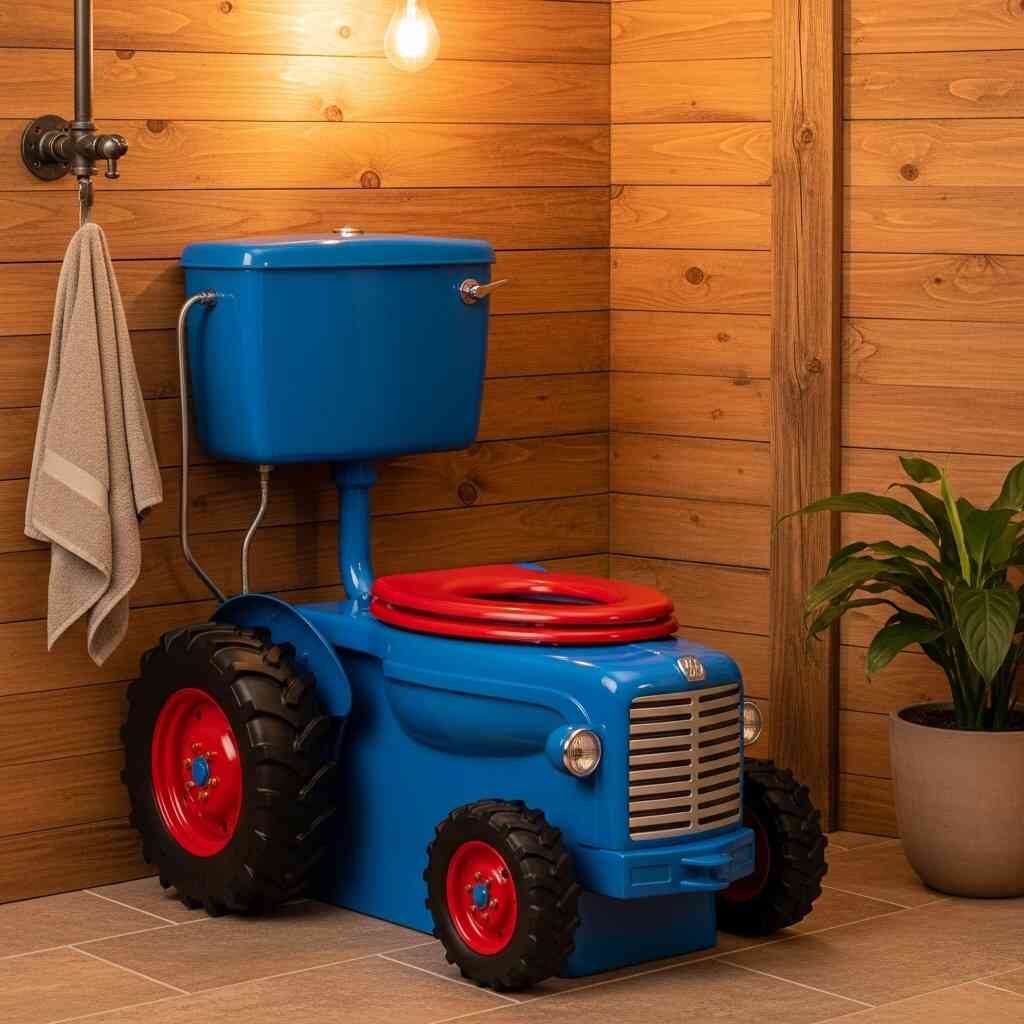
Innovation Through Adaptation
As tractors became more advanced, so too did the need for more integrated solutions. By the 1980s and 1990s, some enterprising farmers began constructing more permanent setups. These often included small enclosures or shields made from sheet metal or plastic, offering a modicum of privacy and protection from the elements. Some models even featured retractable covers or waste containment systems.
While not mass-produced, these custom-built Tractor Toilets demonstrated a growing awareness of the importance of convenience and hygiene in agricultural work. They also reflected the do-it-yourself ethos that characterizes much of farm culture. In essence, the Tractor Toilet evolved from a joke among neighbors to a recognized (if unofficial) part of farm infrastructure.
Modern Iterations: Practicality Meets Creativity
Today’s versions of the Tractor Toilet vary widely. Some are still homemade, cobbled together using PVC piping, storage tanks, and basic plumbing. Others incorporate composting systems or portable chemical toilets designed for recreational vehicles, adapted for use on large machinery. The most elaborate setups include insulated enclosures, footrests, and even lighting for early morning or late-night use.
Despite their diversity, all modern Tractor Toilets share a common purpose: to allow farmers to maintain focus and efficiency while addressing one of life’s most basic needs. This evolution from crude improvisation to thoughtful design highlights the ongoing adaptation of farm tools and techniques to meet real-world demands.
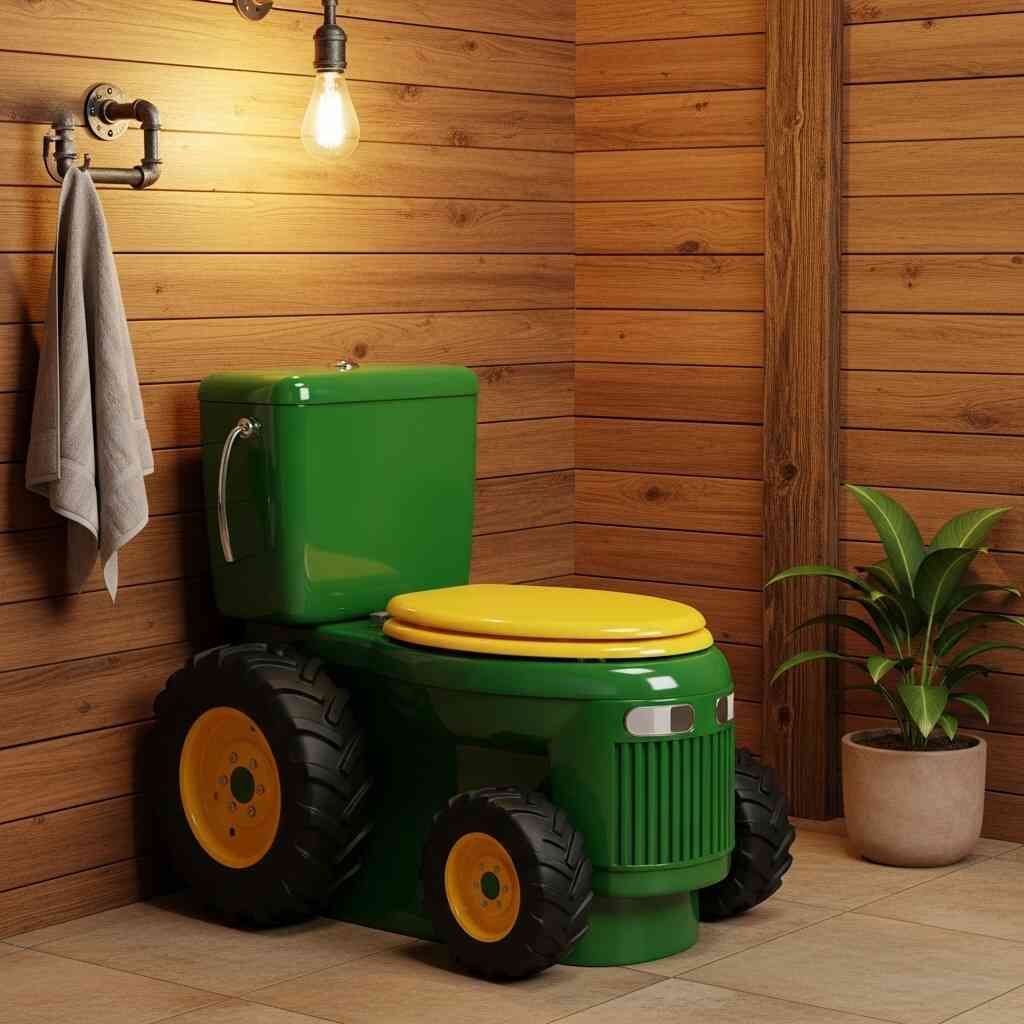
Part II: Functionality and Use – More Than Just a Seat
Efficiency in the Field
At its core, the Tractor Toilet serves a simple function: providing a place for restroom relief during long hours of fieldwork. But its impact extends far beyond that. For operators managing combines, planters, or sprayers, even short interruptions can add up over the course of a day. The ability to quickly step off the cab and use the Tractor Toilet — without losing sight of the machine or the task at hand — significantly reduces downtime.
Moreover, in extreme weather conditions — whether sweltering summer heat or biting cold — the convenience of having a restroom nearby becomes even more critical. Waiting until the end of a shift isn’t always feasible, and repeated trips back to the barn or house can lead to fatigue and frustration.
Hygiene and Health Considerations
One might assume that a toilet mounted on a tractor would pose hygiene concerns. However, many farmers take great care in designing and maintaining their Tractor Toilets to ensure cleanliness and safety. Proper waste management systems, regular cleaning routines, and thoughtful placement help mitigate potential issues.
Some setups include odor-reducing mechanisms, such as charcoal filters or biodegradable liners. Others utilize composting technology, turning waste into usable fertilizer — a fittingly circular approach in agricultural settings. These measures not only improve usability but also align with broader environmental and sustainability goals within the farming community.
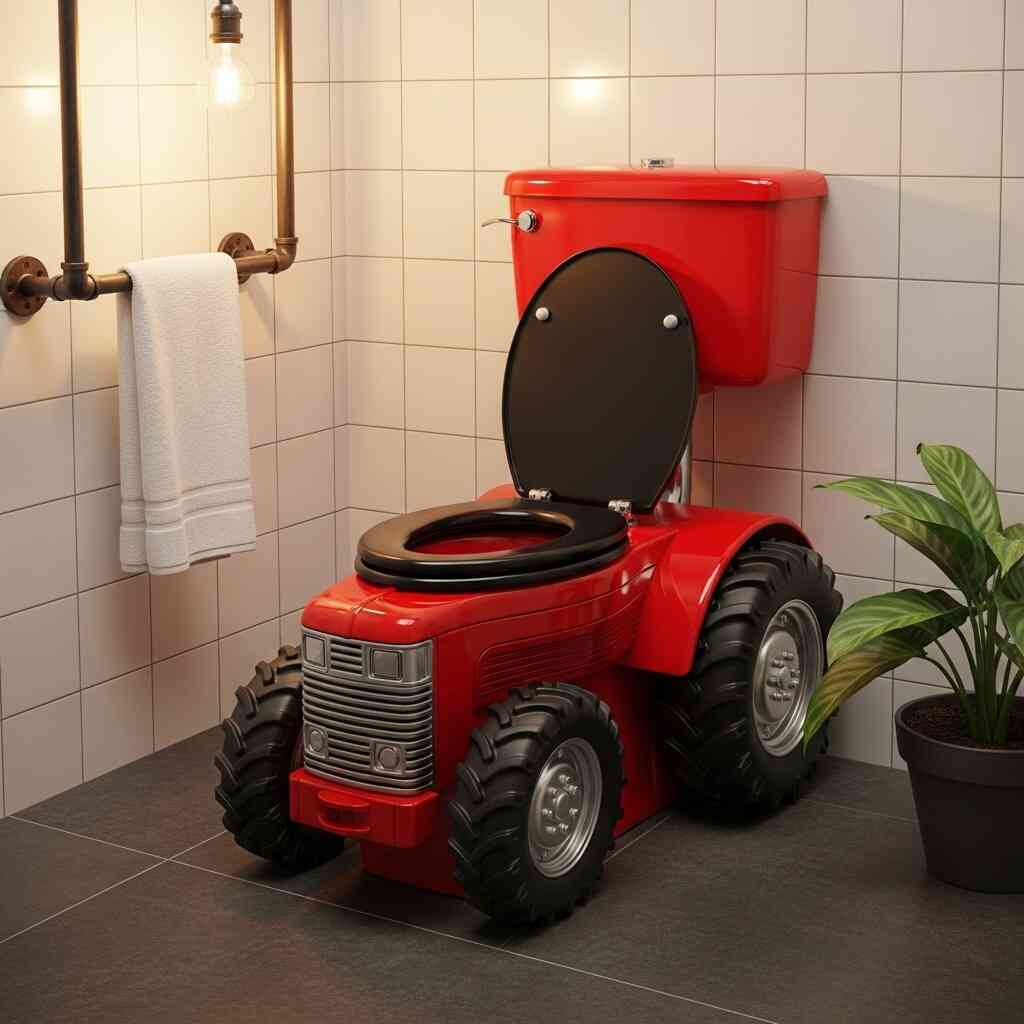
Psychological and Physical Comfort
Beyond the physical benefits, the Tractor Toilet also contributes to psychological well-being. Knowing that a restroom is readily available can alleviate stress and anxiety, particularly during high-pressure periods like harvest. It allows farmers to focus on their tasks without worrying about finding relief at inconvenient times.
Additionally, the presence of a dedicated space for personal use fosters a sense of normalcy and dignity in an otherwise demanding environment. While farm life is inherently rugged, small comforts like the Tractor Toilet remind workers that they are still entitled to moments of privacy and self-care.
Customization and Personal Touches
What sets the Tractor Toilet apart from other agricultural tools is the degree of personalization involved. Farmers often take pride in crafting unique designs that reflect their personalities or family traditions. Some models feature painted signs with humorous messages, while others include decorative elements like curtains or seat cushions.
These touches transform the Tractor Toilet from a purely functional object into a piece of farm culture. They tell stories — of long days, hard work, and the camaraderie shared among those who understand the realities of life in the fields.
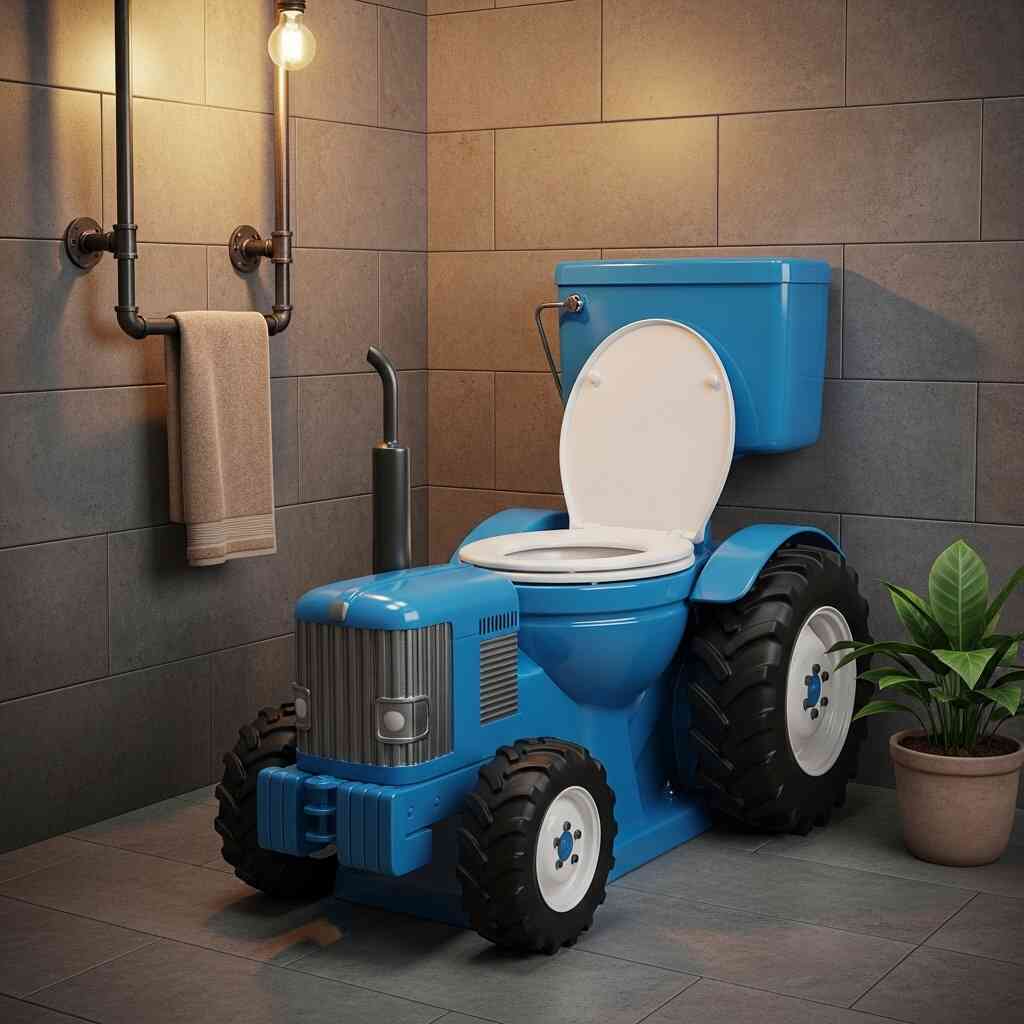
Part III: Cultural Significance – The Tractor Toilet as a Symbol of Rural Ingenuity
Embracing the Quirky Side of Farm Life
Perhaps the most enduring aspect of the Tractor Toilet is its inherent quirkiness. It defies conventional expectations of what a restroom should look like or where it should be located. Yet, in doing so, it captures the spirit of rural life — inventive, resourceful, and unapologetically practical.
Farmers are no strangers to making do with what they have. Whether it’s repairing broken equipment with baling wire or creating makeshift shelters from scrap materials, the Tractor Toilet fits seamlessly into this tradition. It embodies the idea that necessity is indeed the mother of invention.
Community Reactions and Folklore
Within farming communities, the Tractor Toilet has taken on a life of its own. Stories abound of visitors’ shock and amusement upon discovering one for the first time. Some farms have even turned their Tractor Toilets into points of interest, showcasing them during open houses or tours as examples of local ingenuity.
Over time, these anecdotes have contributed to a kind of folklore around the Tractor Toilet. It’s not uncommon for older generations to recount tales of the first time they saw one, or how their fathers or grandfathers rigged something similar decades ago. These stories serve as reminders of the shared experiences that bind rural communities together.
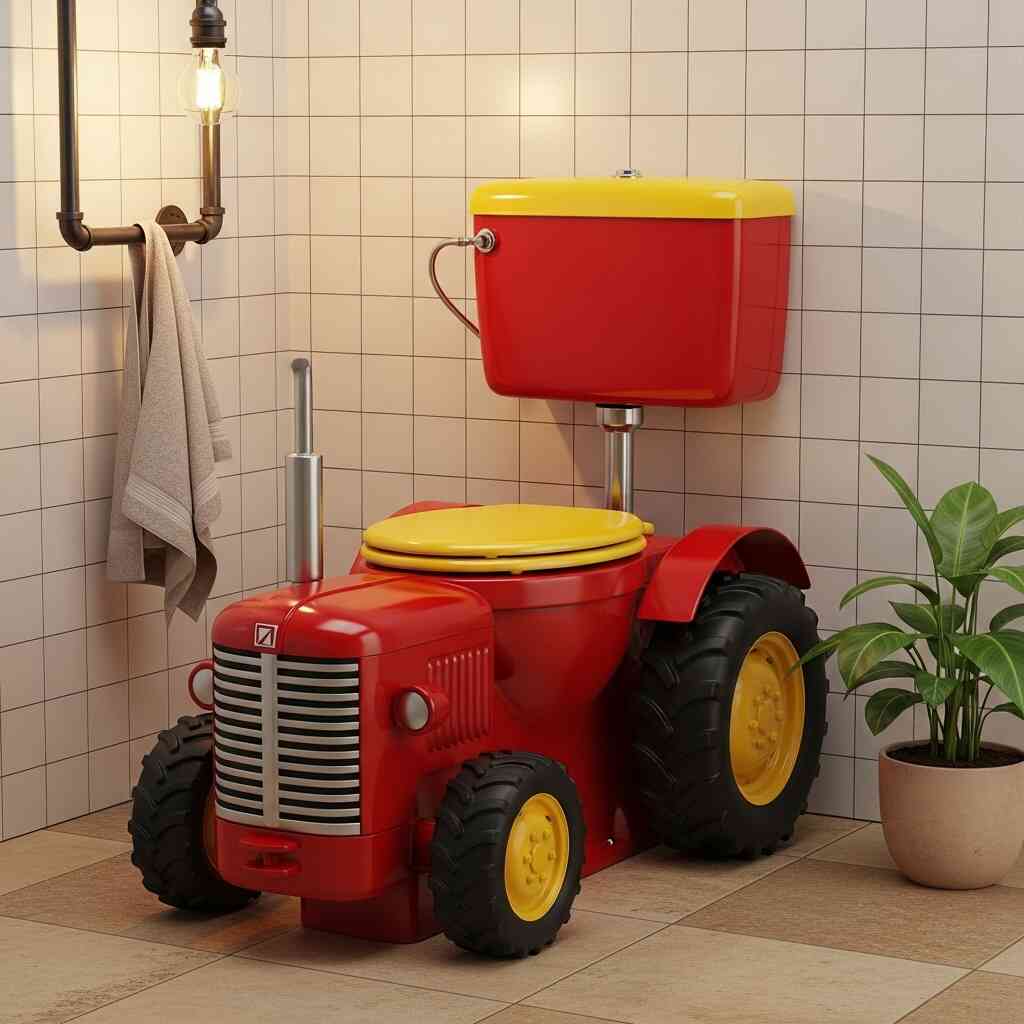
Media Attention and Pop Culture
The Tractor Toilet has occasionally captured the attention of media outlets and pop culture. Television segments, viral videos, and social media posts have introduced this peculiar fixture to audiences far beyond the farm belt. While often presented with a touch of humor, these portrayals also highlight the creativity and problem-solving skills of farmers.
Interestingly, the Tractor Toilet has become a symbol of pride for many in agriculture. It represents a refusal to conform to urban standards of convenience and instead embrace solutions tailored to the realities of rural living. In a world increasingly dominated by technology and automation, the Tractor Toilet stands as a testament to hands-on innovation.
Environmental and Ethical Implications
While not typically discussed in formal debates, the Tractor Toilet raises interesting questions about sustainability and ethics in agriculture. Its existence underscores the need for practical, environmentally conscious approaches to waste management and resource use.
By repurposing materials and integrating eco-friendly systems, farmers demonstrate a commitment to minimizing their environmental footprint. Furthermore, the Tractor Toilet challenges the notion that sanitation must always come at the expense of mobility or efficiency. It proves that with a bit of ingenuity, even the most basic human needs can be addressed in ways that respect both people and the planet.
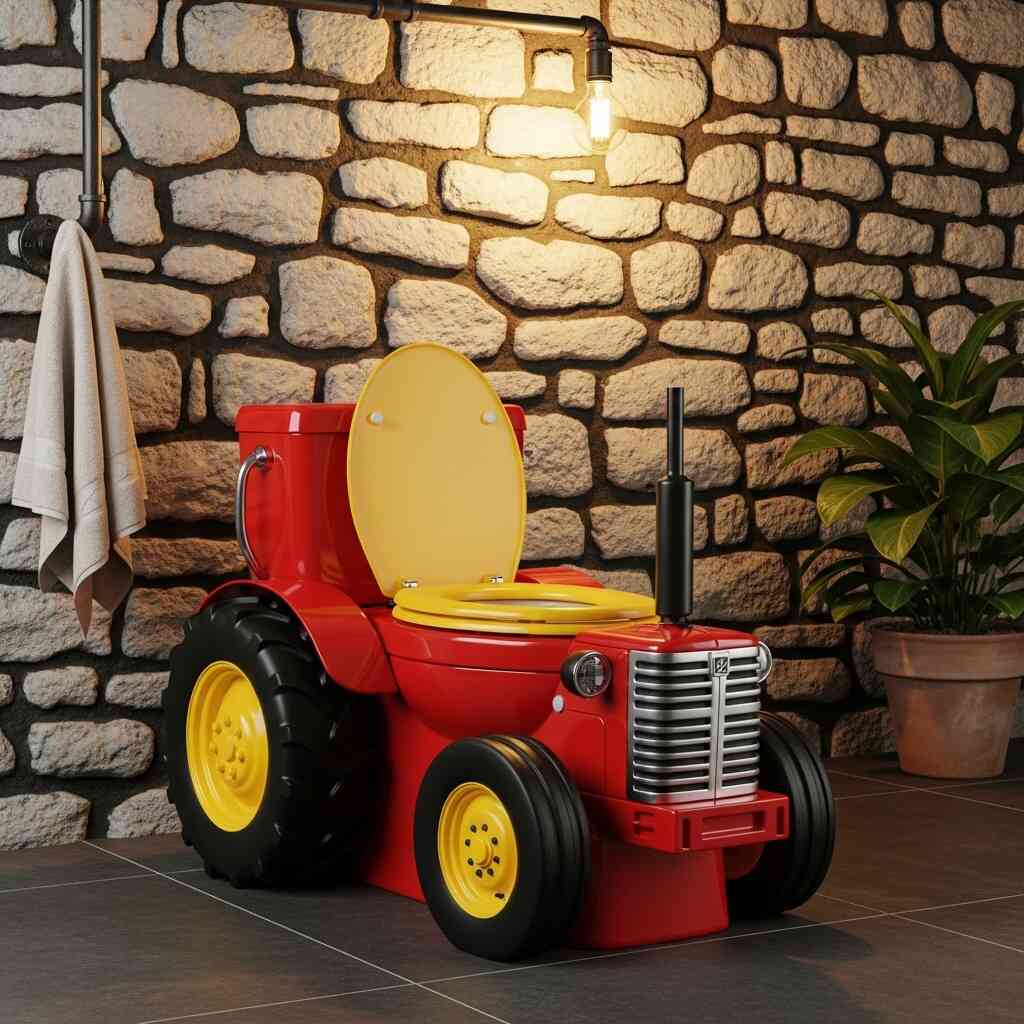
Conclusion: The Enduring Legacy of the Tractor Toilet
The Tractor Toilet may never win awards for elegance or sophistication, but it holds a special place in the hearts of those who rely on it. It is a product of necessity, shaped by the rhythms of farm life and the relentless pursuit of efficiency. More than just a toilet, it is a symbol of resilience, creativity, and the enduring spirit of rural communities.
From its humble beginnings as a bucket tied to a tractor to today’s more sophisticated designs, the Tractor Toilet has evolved alongside agriculture itself. It reflects the changing needs of farmers while remaining rooted in the timeless principles of practicality and adaptability.
Ultimately, the Tractor Toilet reminds us that progress doesn’t always come in sleek packages or polished presentations. Sometimes, it comes in the form of a weathered seat bolted to a machine, standing proudly in the middle of a cornfield — a quirky necessity, yes, but also a quiet revolution in the way we think about work, comfort, and the spaces we inhabit.
So the next time you find yourself marveling at the wonders of modern farming, don’t forget the unsung hero of the fields — the Tractor Toilet. It may not be glamorous, but it’s undeniably a part of the fabric of farm life, woven into the stories, struggles, and successes of those who till the earth.





